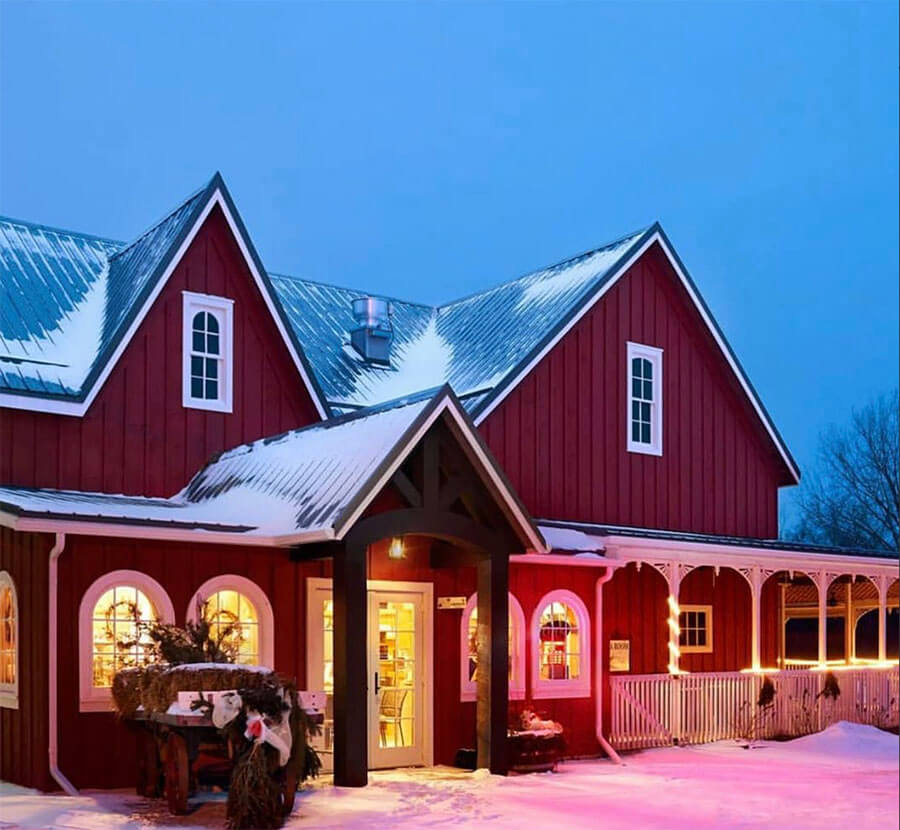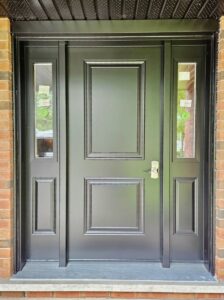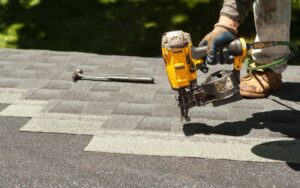Icicles hanging from the edges of your roof can look beautiful after a snowfall, but they often signal hidden issues with your home’s insulation or ventilation. Many homeowners across London, Ontario and surrounding areas notice icicles forming along their eavestroughs every winter and wonder what causes them, and whether they should be concerned.
Why do icicles form on some houses and not others? Are they just a normal part of winter, or a sign of potential roof problems? Are icicles on roofs dangerous?
In this article, we’ll explain what icicles on houses really mean, why they form, how eavestroughs play a role in their development, when they become a problem, and the best ways to prevent ice dams and winter roof damage before it starts.
Why do Icicles Form on Houses?
How Icicles Form on Roofs and Eavestroughs
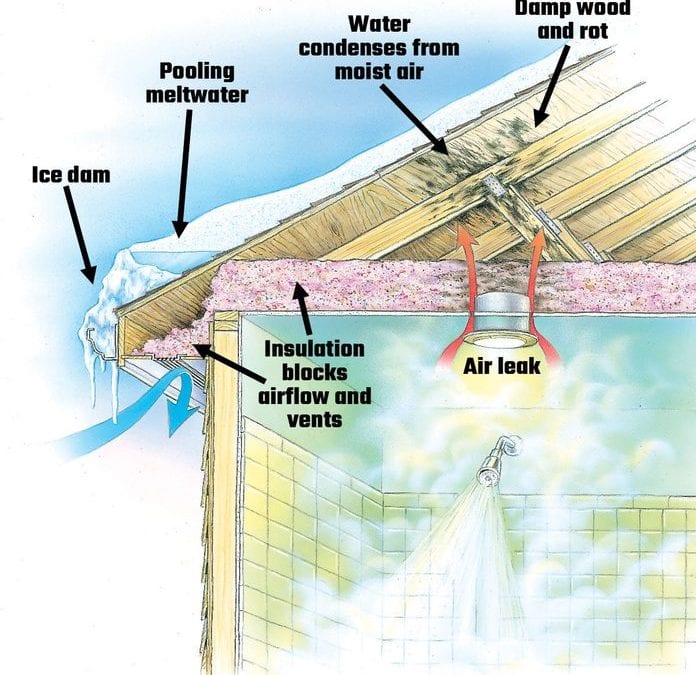
First, you’ll be glad to know a few small icicles are a very normal part of a London, Ontario winter. Icicles will form when warmer temperatures melt snow on both asphalt roofs and metal roofs. This water then runs toward the edges of your roof and drips off the edges or the eavestrough. As night falls and the temperature drops, this water freezes and the cycle is repeated the next morning when temperatures rise again.
When icicles form a large mass, they can form an ice dam. Ice dams block the normal flow of water running off the roof or through the eavestrough like in the diagram below. Water then pools behind the mass of ice and can leak into the home.
How Roof Design and Attic Conditions Affect Icicle Formation
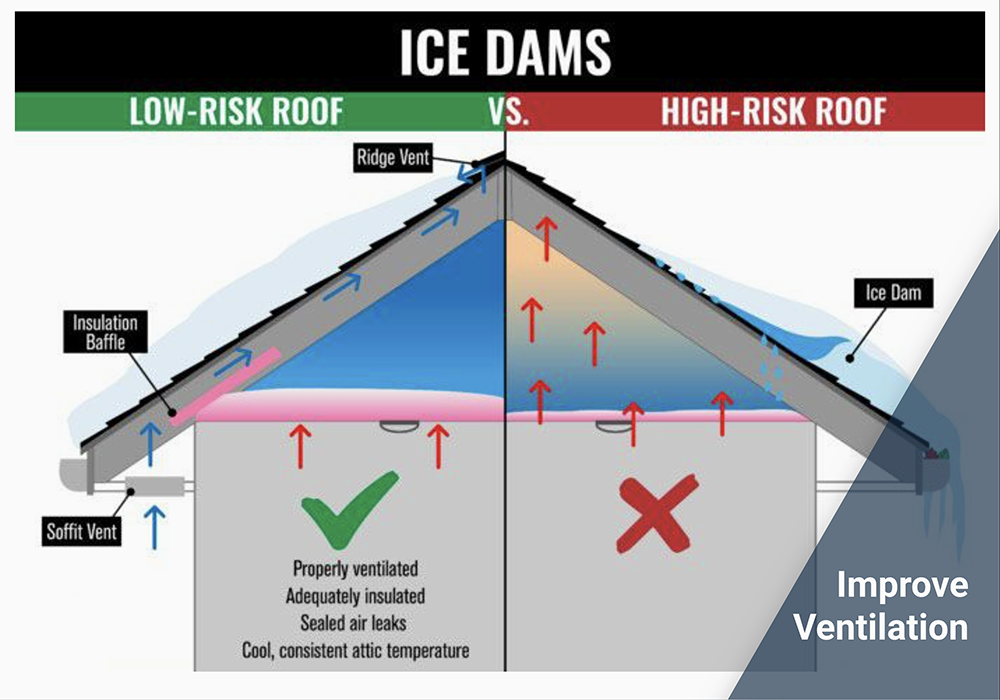
Ice dams can also form when there is improper ventilation and/or insulation in an attic. Improper ventilation could mean the vented soffits are blocked, not allowing air in as shown by the blue arrows in the diagram below.
Warm air can be trapped by insulation inside the attic. In this situation, baffles, which hold attic insulation in place, ridge venting or more roof venting is needed. Not enough insulation in your attic can also be the cause of an ice dam, as shown in the photo above on the right side. When there is not enough insulation in your attic, more warm air rises into the attic from your home causes the snow on your roof to melt quickly. The excess water is then trapped behind the icicles.
The best way to check if your attic insulation is done properly is to have an insulation company come out to assess it and get a quote if additional insulation is needed, if baffles need to be installed, or bathroom fan vents need to be hooked up. The industry standard rating for attic insulation is R-50 in London, Ontario. We recommend reading reviews online to find a reputable insulation company in your area.
Are Icicles Something to Worry About?
If you have a few small icicles, it is not something you have to worry about. If you have large icicles or several that have molded together into a mass, you could have an ice dam forming. Ice dams can cause damage by blocking the normal water flow off a roof and creating a pool of water which can drip down into your living spaces. Heavy and large icicles can also create damage by ripping your eavestrough off your home.
Should I Try and Remove Icicles from My House?
No, do not try and knock icicles down from your home. Larger icicles are heavier than you might think, and they could cause damage to structures below them or pull parts of your roof, soffit, fascia, or trough with them.
How Do I Prevent Icicles and Ice Dams On My House?
1. Clean Your Gutters Regularly
Clean your gutters after leaves fall and/or remove any debris from the top of gutter guards. Having gutter guards does not guarantee you will not have ice dams or icicles. If organic materials build up on top of the gutter guards they can freeze and block the normal flow of water.
2. Check Your Attic Insulation and Ventilation
Have your attic assessed for adequate levels of insulation, check if soffits are blocked, check there are enough attic baffles and all fan vents are venting outside the attic.
3. Add or Improve Roof Ventilation
When you are replacing your roof, be sure to ask if you have enough venting. If you notice a lot of ice forming in the winter, a ridge vent or adding more roof vents can help keep your attic cooler so snow melt is much slower and more gradual not allowing water to build up.
4. Install Vented Soffits
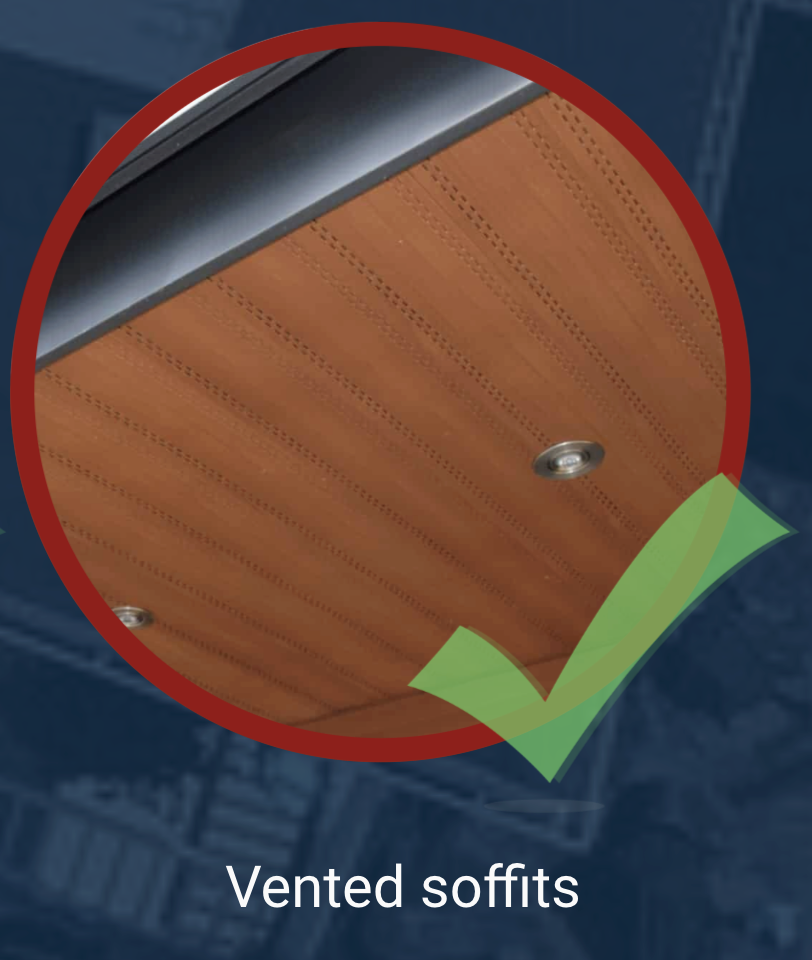
If your soffits don’t have visible vent holes, consider replacing them with vented soffits that allow better airflow. This simple upgrade can significantly improve your home’s ventilation system and help prevent ice dams.
Book a Free Eavestrough and Roof Estimate with 1st Choice Home Solutions
If you’re looking at replacing your damaged eavestrough, need some vented soffits or want to replace your roof with additional venting we’re only a step away. Give us a call at 519-268-6331 or book your free estimate today.

